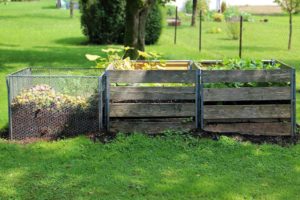10 Tips to Get Ready for Winter
 As the summer winds up, we need to start thinking about getting our yards and gardens ready for the cold months. Doing a little prep work now will help you have a great looking yard next Spring. Here are some tips from the experts at Outdoor Innovations on winterizing your property.
As the summer winds up, we need to start thinking about getting our yards and gardens ready for the cold months. Doing a little prep work now will help you have a great looking yard next Spring. Here are some tips from the experts at Outdoor Innovations on winterizing your property.
Feed the Lawn
Your grass has taken a beating this summer with withering heat and drenching rains. In the fall months, you should fertilize your lawn with a fertilizer that is high in nitrogen during the start of September. Before the ground freezes (around the end of October, usually), you should do a second wave with a fertilizer that is high in phosphorus. This will give your lawn the nutrients it needs to thrive through the winter. To have a more exact schedule of feeding times, you should get a soil test. This test will tell you about nutrient levels, soil pH, and other important information.
Another easy way to feed your lawn is to mow over the fallen leaves. Leave a fine mulch on top of the lawn, but don’t bury the grass in leaves. This could starve the lawn from sun and moisture during the winter.
Keep Watering
Although you’ll want to put your hose away before the temperatures drop below freezing, you still need to keep watering. In most cases, lawns should get about an inch of water every two to three weeks. Keep the ground moist, but not soaking. Overwatering a lawn can promote mold growth as winter approaches.
Cover Your Garden
Before winter comes, tuck your garden in for a nap. If you have the resources, you can plant a nitrogen-rich cover crop such as clover. This plant can be turned over the following spring, so it’s a relatively easy way to protect your garden. Another option is to cover the beds with burlap to keep weeds from taking over the area.
Put the Pruners Away
You typically don’t want to prune before winter, as pruning encourages growth and you don’t want tender shoots exposed to the winter weather. If you’re uncertain whether a plant can be pruned, give us a call and we’ll give you some advice. If a limb is dead, it is ok to trim that off. Pests will use the deadwood to hibernate, so don’t give them a hiding place.
Fix Damaged Areas
This Spring and Summer were unusual and really took a toll on many lawns around the area. If a lawn is severely damaged to the point that it needs to be reseeded, you may want to wait until Spring. If you can’t wait, many experts recommend using a grass that germinates quickly, like perennial ryegrass. You can help the seeds take root by applying a quarter-inch of soil or compost.
Put Down Some Mulch
Now is a good time to put down some fresh mulch. We recommend you place the mulch around your trees in the shape of a tire. This will prevent critters from making their homes in the mulch.
Call an Expert for Winterizing Tips
There are a lot of things you can do yourself, but if you want to make sure your lawn and landscaping is ready for the winter, give the professionals at Outdoor Innovations a call. We’ll be happy to help you get winterizing and help get everything just right before Old Man Winter comes knocking.

 Give Your Plants Nutrients
Give Your Plants Nutrients Out with the Old
Out with the Old